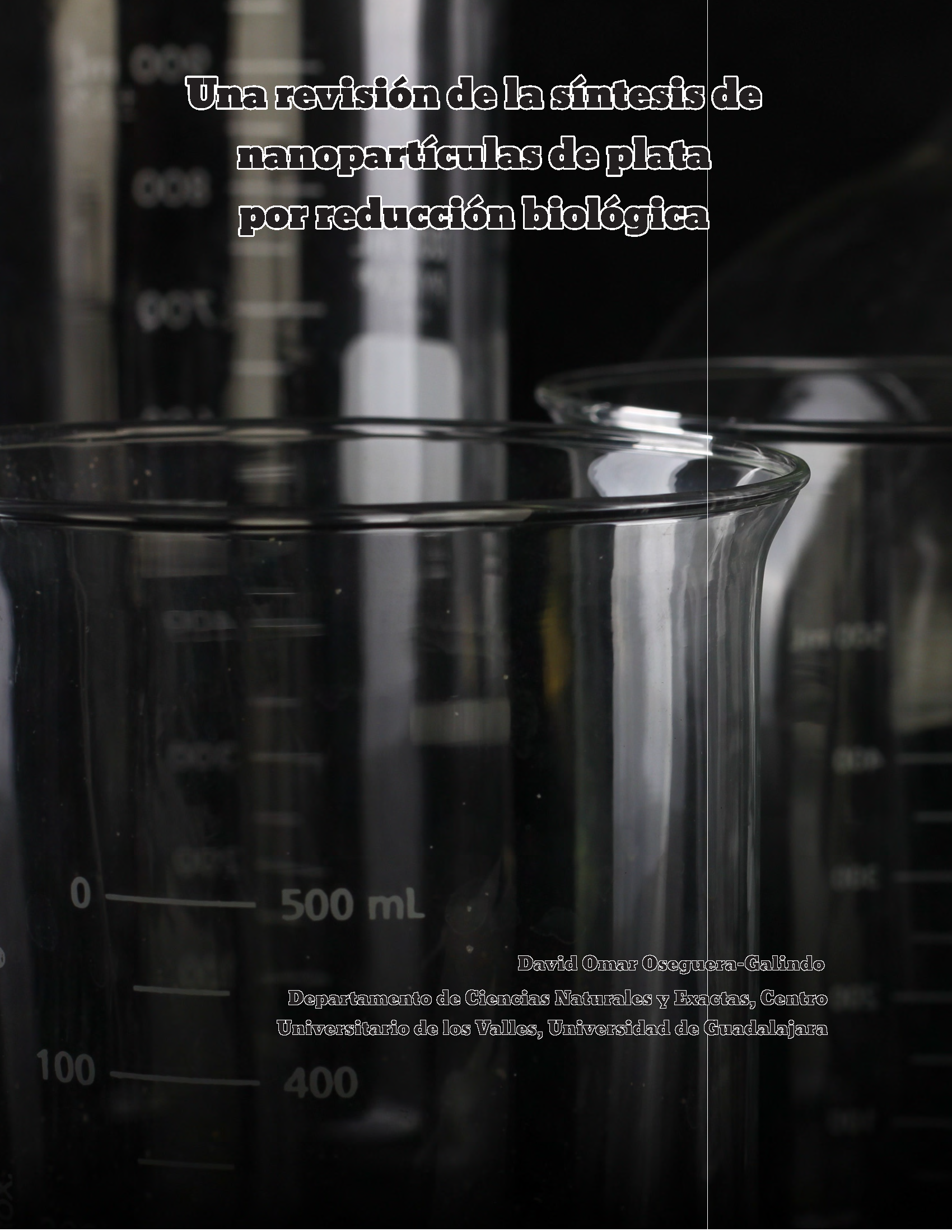A review of silver nanopatricle synthesis by biological reduction
Abstract
It is important to work with silver particles at nanometric scale by attractive they are for antimicrobial applications, being this interesting in several disciplines. In this study is presents a review of scientific articles about a recent method, based on in the green synthesis to obtain silver nanoparticles where this method is eco-friendly and is low cost. Furthermore, a description of the fundament of this method is made and the process to prepared these kinds of nanoparticles.
Downloads
References
Ali ZA y cols ., 2016. Green synthesis ofsilver nanoparticles using apple extract and its antibacterial properties. Advances in Materials Science and Engineering.2016: 1-6
Basavegowda N y cols ., 2013. Synthesis of silver nanoparticles using Satsuma mandarin (Citrus unshiu) peel extract: a novel approach towards waste utilization. Materials letters, 109:31-33.
Dubey S. P y cols ., 2010. Green synthesis and characterizations of silver and gold nanoparticles using leaf extract of Rosa rugosa. Colloids and Surfaces A: Physicochemical and Engineering Aspects, 3 64: 34-41.
Govarthanan M y cols ., 2016. Low-cost and eco-friendly synthesis of silver nanoparticles using coconut (Cocos nucifera) oil cake extract and its antibacterial activity. Artificial cells, nanomedicine, and biotechnology, 44: 1878-1882.
Ibrahim H M (2015). Green synthesis and characterization of silver nanoparticles using banana peel extract and their antimicrobial activity against representative microorganisms. Journal of Radiation Research and Applied Sciences, 8: 265-275.
Jha A K & Prasad K (201 O). Green synthesis of silver nanoparticles using Cycas leaf. International Journal of Green Nanotechnology: Physics and Chemistry, l: 110-117.
Kahrilas G Ay cols ., 2013. Microwave-assisted green synthesis of silver nanoparticles using orange peel extract. ACS Sustainable Chemistry &Engineering,2: 367-376.
Khalil M y cols., 2014. Green synthesis of sil ver nanoparticles using olive leaf extract and its antibacterial activity. Arabian Jaurnal af Chemistry, 7: 1131-1139.
Kumar R y cols ., 2017. Rapid Green synthesis of silver nanoparticles (AgNPs) using (Prunus persica) plants extract: Exploring its antimicrobial and catalytic activities. Jaurnal af Nanamedicine and Nanatechnalagy, 8: 1-8
Ledezma A y cols ., 2014. Síntesis biomimética de nanopartículas de plata utilizando extracto acuoso de nopal (Opuntia sp.) y su electrohilado polimérico. Superficies y Vacío 27: 133-140
Li Sy cols ., 2007. Green synthesis of silver nanoparticles using Capsicum annuum L. extract. Green Chemistry, 9:852-858.
Monge M (2014). Nanopartículas de plata: métodos de síntesis en disolución y propiedades bactericidas. InAnales de Química 105:33-41.
Morones-Ramirez J R y cols., 2013. Silver enhances antibiotic activity against gram-negative bacteria. Science translatianal medicine 5: 190.
Oseguera-Galindo, DO y cols., 2012. Effects of the corrfining solvent on the size distribution of silver NPs by laser ablation. Jaurnal af Nanaparticle Research, 14: 1-6.
Padalia y cols ., 2015. Green synthesis of silver nanoparticles from marigold flower and its synergistic antimicrobial potential. Arabian Jaurnal afChemistry, 8:732-741.
Prathna, T. C y cols ., 2011. Biomimetic synthesis of sil ver nanoparticles by Citrus limon (lemon) aqueous extract and theoretical prediction of particle size. Callaids and SurfacesB: Biainterfaces, 82 :152-159.
Rastogi L & Arunachalam, J (2011 ). Sunlight based irradiation strategy for rapid green synthesis of highly stable silver nanoparticles using aqueous garlic (Allium sativum) extract and their antibacterial potential. Materials ChemistryandPhysics, 129: 558-563.
Saxena A y cols 2010. Biological synthesis of silver nanoparticles by using onion (Allium cepa) extract and their antibacterial activity. Dig J Nanamater Bias, 5 :427-432.
Sun Q y cols ., 2014. Green synthesis of silver nanoparticles using tea leaf extract and evaluation of their stability and antibacterial acti vi ty. Calla ids and surfaces A: Physicachemical and Engineering aspects, 444:226-231
Vazquez-Muñoz, R y cols ., 2017. Toxicity of silver nanoparticles in biological systems: Does the complexity of biological systems matter? .Taxicalagy letters 276: 11-20.






